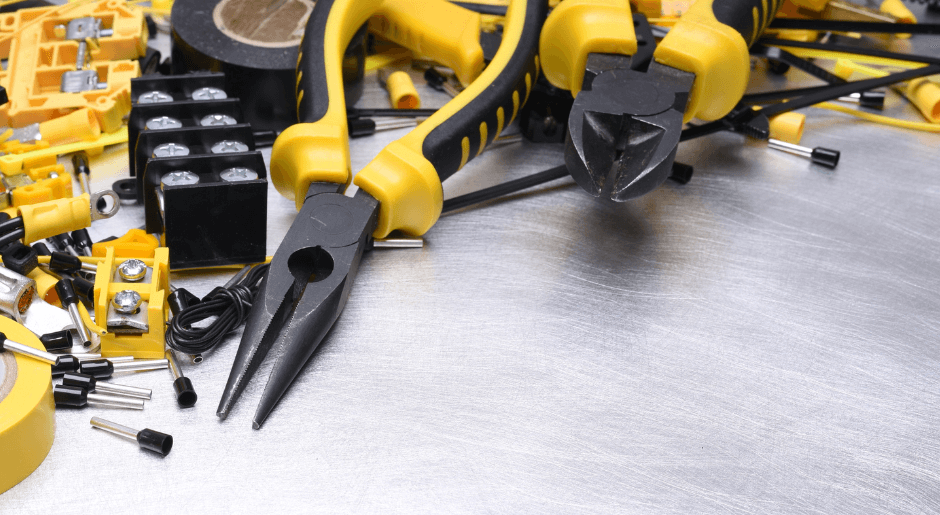With the way technology has changed, an outdoor antenna can bring back the joy of watching clear broadcasts. With the help of this guide, you’ll be able to take charge of your TV experience by simplifying the process of mounting an outside antenna at your residence.
How to Choose an Outdoor Antenna
The first step towards better TV coverage is to choose the right antenna. The antenna type you need will depend on where you live concerning TV towers. Think about the following things:
Location and Distance: Figure out how far your flat is from the closest TV transmitters. The closer you are, the more small an antenna you can utilize. On the other hand, antennas with higher performance are needed to pick up weaker messages from farther away.
Signal Strength: Use internet tools or mobile apps to investigate signal strength in your area. With this knowledge, you can choose an antenna that has the efficiency and range you need to pick up signals.
Programs and Frequencies: Figure out what programs you want to watch. Some antennas can pick up UHF and VHF stations, but others are only good for one. Ensure the device you choose works with the channels you want to watch.
Directional vs. omnidirectional: Directional antennas focus on signals from one direction, which is great when all the television towers are in that area. Omnidirectional antennas are suitable for places with scattered towers and can pick up signals from all directions.
Landscaping and Obstacles: Consider the land and obstacles between your flat and the towers. Tall buildings, trees, and hills can block signals. Choose an antenna with the right gain to tackle problems.
Place for Installation: Figure out where you can put the antenna. There may be rules about where you can put an antenna in an apartment, so choose one that fits your space, whether it’s a rooftop, roof, or window.
Budget: Antennas come in different price bands. Even though quality is important, you should consider your income and find a balance between performance and price.
Reviews and Suggestions: Read customer reviews to learn more about how an antenna works in the real world. Advice from people who have used the product before can help you decide.
Professional Guidance: If unsure, talk to a qualified installer. He can examine your case and tell you which antenna will work best for you.
Don’t let technical issues disrupt your routine. Schedule a service with Techni Services and enjoy reliable solutions delivered by our experts. Reach out today to book your appointment and get your tech back on track!
Necessary Tools and Materials
Before you start installing an antenna, make sure you have all the tools and items you’ll need:
Antenna Kit: Buy an outdoor TV antenna kit that meets your needs and is of good quality. Kits usually come with the antenna, the hardware for attaching it, and other important parts.
Coaxial wire: Get a long enough piece to link the antenna to your TV. Choose a high-quality cable to keep the data clear.
Hardware for mounting: Depending on how the antenna’s structure is made, you may need brackets, screws, and bolts to place it securely.
Drill and Bits: You need a drill to make holes in walls, roofs, or other surfaces where you want to mount the antenna. Make sure you have the right drill bits for the job.
Wrenches and Screwdrivers: During installation, you’ll need a set of wrenches and screwdrivers to tighten nuts and screws.
Grounding Equipment: It is very important to ground your transmitter for safety. Get a grounding block, line, and other grounding parts you need.
Sealant: Fill any holes you drill with a waterproof sealant to keep water out and the signal strong.
How to Determine Signal Strength
A TV outdoor antenna signal strength must be determined to achieve the best reception and a satisfying TV viewing experience. By figuring out how strong the signals are in your area, you can decide where and how to put your antenna. The following steps will show you how to assess the outdoor antenna’s signal strength:
Use a Website or Mobile App: Several websites and applications are available, each with details about local TV channels, including signal strength and broadcasting frequencies. Some websites, like AntennaWeb.org, have live maps that show where towers are and how strong the signal is.
Specify Your Location: Give the online tool or app your address or ZIP code. After you put in your location, the tool will show you a signal strength map. Using different colors, this map generally shows where nearby broadcast towers are and how strong the signal is. Most of the time, darker colors mean stronger signals.
Check for stations: The tool will also tell you what stations are available in your area and their strength.
Look into Signal Direction and Signal Strength: The signal range map will also show the direction. It tells you which way the towers are facing concerning your apartment.
Pay attention to the signal strength indications for each channel: Most of the time, these lights can be either green (strong signal) or red (weak signal). You can choose channels with better reception using this.
Try out different antenna placements and orientations: Remember that buildings, trees, and hills can get in the way of the signal. To reduce these obstacles, change the antenna’s position. Aim to put the antenna in the direction of the towers with the strongest signals.
Observe Signal Quality: As you move and rotate the antenna, use your TV’s signal strength meter (usually in the menu) to see how the signal quality changes. With this meter, you can find the best place for the antenna.
For the best results, fine-tune the antenna’s position and angle while monitoring your TV’s signal strength. Fine-tuning can have a big effect on reception. Signal strength can change because of the weather and other variables. Repeat the process regularly to ensure you get the best signal possible.
This information allows you to watch various stations with clear and continuous broadcasts.
Choosing the location for the installation
The position of your antenna’s installation considerably impacts its performance. When choosing its position, think about the following:
- Elevation: Choose higher sites to eliminate obstacles and get a better signal.
- Line of Sight: A clear line of sight to broadcast towers reduces signal interference.
- Obstructions: Avoid areas with tall buildings, trees, or other structures that could block signals.
- Apartment Layout: Consider the layout of your flat and the available outdoor space.
- Regulations: Check if your apartment building has rules about installing things outdoors.
Assemble an Antenna
Get together all the screws, bolts, and nuts with your antenna kit. Ensure these parts work with the mounting surface you have picked.
Follow the directions from the manufacturer to assemble your outdoor TV antenna. Usually, this means connecting elements, reflectors, and other parts according to the instructions.
Installing the Antenna
For stable operation, it is important to mount the antenna securely. Depending on the layout of your apartment and the type of antenna, choose a stable place to put it, like a wall, roof, or pole. Use the right tools to connect the antenna to it.
Attach the bracket to the chosen surface. Make sure the bracket is straight and firmly attached. Make sure the antenna doesn’t move around and stays still. Put waterproof sealant around the mounting bracket, bolts, and any holes you drilled to keep water out.
You can change the antenna’s direction and angle for the best coverage and signal strength. You might have to try different positions for this step until you find the best one. Think about hiring an expert. If you’re unsure how to do it, you might want to get help from a professional provider to ensure it’s done right and stays in place.
Coaxial cable installation
Connect the cable from the antenna to your TV at an accessible entry point. Seal any cracks or holes with a waterproof sealant to keep water from getting in and signals from getting messed up.
Rooting the System
Grounding the outdoor TV antenna is critical for safety and protecting your equipment from lightning strikes. For proper grounding, a grounding block and a grounding wire must be connected according to the electrical rules in your area.
Connecting Your TV
Connect the coaxial line to your TV once the antenna has been installed and grounded. Depending on your TV’s input choices, connect the cable to the RF input or use a converter box if you need to.
Adjusting and fine-tuning
After you’ve connected, adjust your antenna for the best results:
- Direction: Change the direction of the antenna so that it points towards the radio towers. Small changes can have a big effect on the quality of the signals.
- Angle: Try different angles for the antenna to find the best spot for signal receiving.
- Signal Strength: Use your TV’s signal strength meter to keep track of changes as you make adjustments.
Testing Signal Quality
Scan for channels and check the signal strength frequently to ensure you always get a clear signal. Weather can affect the quality of a signal, so changes may need to be made from time to time.
Fixing Problems
If you find signal problems, try the following troubleshooting steps:
Check the Connections: Make sure all connections, from the cable to the TV, are tight and secure.
Adjust Antenna: To get a better connection, try changing the direction and angle of the antenna.
Signal amplifiers: If you need to boost poor s, use a signal amplifier.
Upkeep and Care
Follow these care tips to keep things running at their best:
- Check the antenna and wires occasionally for damage or corrosion.
- Clean the antenna to eliminate dirt, trash, and anything else that could block the signal.
Following this detailed guide, you have successfully set up an outdoor antenna at your flat. You’re in charge of how you watch TV now, and you can watch high-quality shows without having to deal with expensive subscriptions.
Conclusion
To sum up, putting up an outdoor TV antenna at your flat is a fun project to improve your TV experience. By picking the right antenna, getting the tools you need, and following the step-by-step placement instructions, you can enjoy your favorite shows without any interruption.
Remember to periodically check and change your antenna to get the best signal quality. If you have any problems, look at the tips for fixing them. Your best outdoor antenna for digital TV Australia will give you years of fun and value if you take care of it and keep it in good shape.



